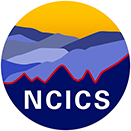
























During heatwaves, young people with ADHD made more visits to the emergency room for depression and suicidal thoughts, according to new research led by NCICS's Jennifer Runkle and Charlie Reed. As extreme heat events become more common, the study shows the deep connections between environmental stress and mental health—and points to a need for targeted interventions for at-risk youth. Read more: ... See MoreSee Less

Youth with ADHD Face Increased Heat Risks :: North Carolina Institute for Climate Studies
ncics.org
We are pleased to announced that our new article, “Assessing the impact of heatwaves on emergency visits for major depression and suicidal ideation in youth with attention-deficit/hyperactivity diso...0 CommentsComment on Facebook
The Arctic is experiencing more rare extreme events—including atmospheric and marine heat waves and loss of sea ice—across all components of the climate system. A new paper led by NCICS’s Xiangdong Zhang examines the reasons why—and warns that as Earth continues to warm, such events "will become the new norm."
... See MoreSee Less

Increasing Heat is Super-Charging Arctic Climate and Weather Extremes
news.ncsu.edu
A “pushing and triggering” mechanism has has driven the Arctic climate system to a new state, which will likely see consistently increased frequency and intensity of extreme events across the atmo...0 CommentsComment on Facebook
